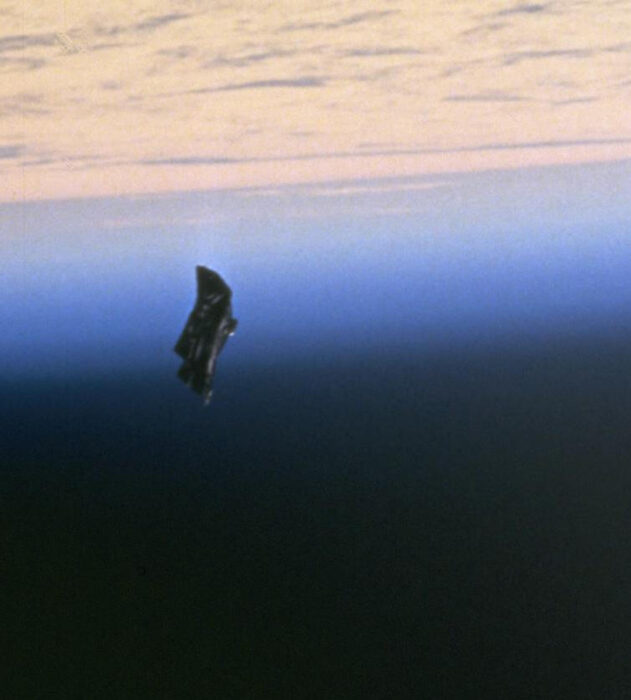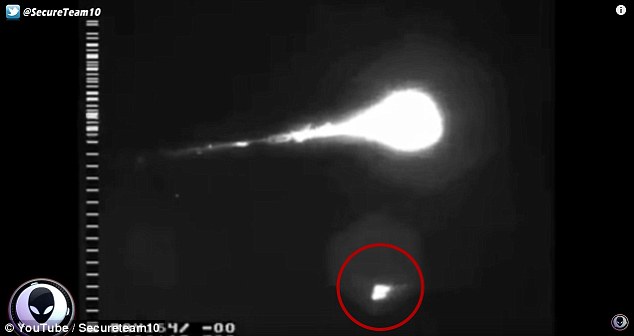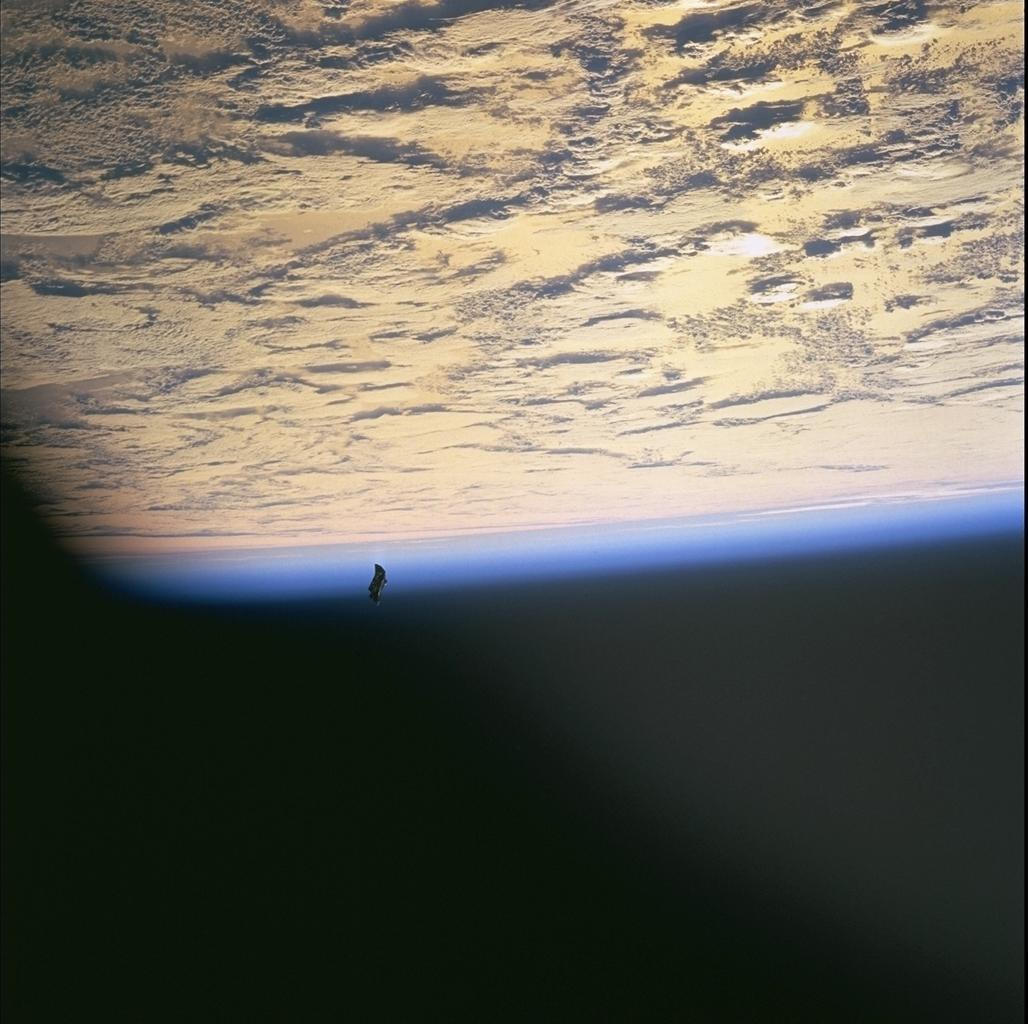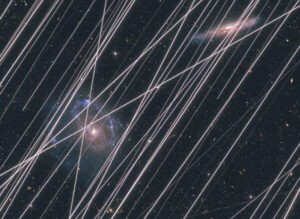My grandfather and I had a daily ritual when I came home from school. I breezed through my homework so we could watch National Geographic, the History Channel, or the Discovery Channel. I called it the Educational Trinity. Those afternoons shaped my fascination with all the strange things in our world.
Glued to the TV one day, I came across a program about UFOs. One particular story stuck with me. In 1998, a photograph was taken from the International Space Station. It was of a black, oddly shaped object hovering in the eerie, pale glow of Earth’s orbit. What was this object? Was it watching us? Where did it come from? Years later, I may finally have answers.
What happened in 1998?
In December 1998, the Space Shuttle Endeavour flew to the International Space Station. The STS-88 mission was critical for the expansion of the ISS, and the astronauts were supposed to connect the first American module (Node 1) to the station.
While some astronauts worked outside, those inside took photos of Earth. To their surprise, a mysterious object was floating a short distance away. When NASA released the images, the object became a topic of debate on Earth.

Close-up of the object. Photo: NASA
Some people assumed it was a UFO monitoring our planet. The dark, angular object was unlike any human-made satellite. It lacked the usual circular or cylindrical shape with panels at the sides. Rather, this one had odd edges, curves, and no identifiers like flags or model numbers. In certain images, the object appeared to change shape.
The object became known as the Black Knight Satellite. Some conspiracy theorists believe it dates back to Nikola Tesla’s experiments with electricity and radio signals.
Nikola Tesla
Black Knight conspiracy theorists link the object to 1899 when Nikola Tesla conducted experiments in Colorado Springs. Tesla built the Tesla Experimental Station, where he aimed to study electricity, wireless telegraphy, and the role of air pressure. While conducting these tests, his receiver picked up on some peculiar signals. In 1899, he reported:
We’re getting messages from the clouds one hundred miles away, possibly many times that distance…
Later on, in 1935, he stated:
In 1899, while experimenting with a wireless receiver of extraordinary sensitivity, I detected faint signals from Mars, our brother planet. I could not interpret the signals, but they seemed to suggest a numerical code, one–two–three–four.
As interesting as these signals sounded, Tesla ran into financial trouble and did not pursue the matter further.

Nikola Tesla’s experimental station in Colorado. Photo: Charles Alley
Decades later, in 1927, Norwegian amateur radio operator Jorgen Hals was playing around with his radio equipment. Upon turning the radio to a certain frequency, the signals bounced back slower than usual (15 seconds as opposed to one-seventh of a second). Why the delay? Had Hals picked up on something lurking above the Earth? This odd phenomenon is cited as early evidence of the satellite’s existence.
The UFO craze
In the 1950s and 1960s, reports of a satellite of unknown origin circulated. In a 1954 newspaper report titled Artificial Satellites Circling Earth Now, says Ex-Marine, ufologist and former Marine Donald Keyhoe said there were:
At least one, and possibly two, artificial satellites circling the earth.
Another report stated that unusual radio signals had been detected in Earth’s ionosphere. Supposedly, the signals didn’t match patterns from human-made transmissions.
The U.S. military initially attributed the signals to the Soviet Union or natural space phenomena. However, the Soviets only launched Sputnik 1, their first satellite, in 1957. This led some researchers to suggest an alien satellite was responsible.
In 1958, amateur astronomer Steven Slayton spotted an anomaly close to the Moon. Through his telescope, Slayton saw a fast-moving dark object that he estimated was 10m long and 1,000km from Earth. He saw this object more than once during his night sky observations.
In the 1960s, when the Space Race heated up, reports of strange objects increased. Astronaut John Glenn’s account of three spacecraft following his ship during his first orbital flight is well documented.
In March 1960, several newspapers reported strange activity in Earth’s polar orbit; again, an object of unknown origin. Years later, this was revealed to be a U.S. satellite designed to spy on the Russians.
Observing Earth for 13,000 years
It wasn’t until the 1970s that the object finally got its name. ‘Black Knight’ comes from a novel by Russian author Alexander Kazantsev. In his book, The Destruction of Faena, an alien civilization sent a satellite to observe the human race. The satellite had the code name, Black Prince.
One of the most prominent figures associated with the Black Knight theory is Duncan Lunan, a Scottish researcher and writer. In 1973, Lunan published an article in the Fortean Times, a magazine dedicated to anomalous phenomena. In this article, Lunan analyzed radio signals recorded in 1928 and 1950.
Lunan theorized that the signals were not random. Rather, they were a coded message sent from a satellite orbiting Earth. He suggested that the signals could be of extraterrestrial origin, although he was careful to point out that they might not necessarily be linked to the Black Knight. In fact, Lunan distanced himself from the Black Knight conspiracy, saying it had “nothing to do with me.”
Lunan studied Long Delayed Echoes (LDEs) and believed they created “star charts and diagrams,” according to an article published by Armagh Observatory and Planetarium. On his website, Lunan states:
When I tried graphing the signals to see if that would work, to my astonishment I found what appeared to be a readable message, giving Epsilon Boötis (Izar) as the origin star of the spacecraft, and its arrival date as 11,000 BC.
Let’s debunk
Circling back to Tesla and Hals, there could be a natural explanation for their mysterious findings. They could have picked up signals coming from deep-space pulsars. Pulsars are a type of neutron star, remnants of massive stars that have exploded as supernovas. A pulsar rotates rapidly, often several times per second, and its strong magnetic field generates beams of electromagnetic radiation (radio waves, X-rays, or gamma rays) which we can pick up from Earth. Astronomers did not discover pulsars until the late 1960s.
As for the STS-88 mission, as anticlimactic as it sounds, NASA’s official classification of the mystery object is a runaway thermal blanket or piece of space debris. Space debris in low orbit is common, and objects can appear irregular or even resemble artificial structures, especially from a distance.
Respected space journalist James Oberg provided substantial evidence that the object was debris. He points out that the crew on the STS-88 mission were installing a Node, which required a blanket to protect it from the sun.
In their communications with each other on the spacewalk and from inside the space station, the astronauts even state that they lost a thermal blanket. Here is an official transcript between Commander Robert Cabana and Mission Specialist Jerry Ross:
Cabana: Jerry, one of the thermal covers got away from you.
Ross: How did it do that?
Cabana: Jim saw a tether, I’ll guarantee you. Where did it go?
Ross thought the Black Knight theory preposterous and later said:
If we see something up there, we will be the first ones to ask questions and to tell people we saw something we didn’t understand. Conspiracy theories are fun for those working on them, but a waste of valuable brain power.
So, with all this evidence, why hasn’t the story died?
Reemergence in 2017
The conspiracy theory reemerged fairly recently because of an article by writer Daisy Dunne for the MailOnline. The website shared video footage that supposedly showed someone shooting down the Black Knight satellite.
The footage shows a bright white ball of debris falling from the sky. It took the internet by storm.
Who shot it down? “A secret Illuminati warplane,” according to online conspiracy theorists.
And so, though thoroughly debunked, the Black Knight Satellite continues to fuel wild theories. We must admit, it makes for a great story.

An image from the video supposedly shows the “Black Knight” exploding. Photo: MailOnline






